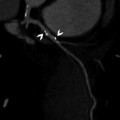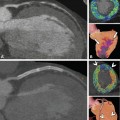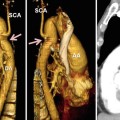
Your smile is one of the most important of the many features that make you unique. Other people base their opinions of us on our smiles. Cavities, missing teeth, discoloration, and similar issues can affect your life in many ways. That is why visiting the dentist every six months is so important.
At each dental visit, dentists examine the patient’s mouth, looking for any signs of cavities, bone loss, infection, and other common oral health concerns. If issues are found, the dentist may recommend X-rays to determine if additional problems are present. Otherwise, the visit includes a tooth cleaning before you’re sent home for six months.
Dental X-rays give dentists an extra eye to detect oral health problems like those mentioned above. Many oral health problems are present before symptoms like tooth pain and discomfort occur. An X-ray spots these issues before they worsen.
You’ll have X-rays taken if the dentist spots areas of concern.
An X-ray provides an image of an area of the mouth that the dentist cannot see during a visual examination. X-rays detect cavities, bone loss, infections, tooth abscesses, and other oral health conditions.
Many problems can lurk beyond the surface and deep within the tooth, jawbone, or other areas of the mouth. These issues may not present symptoms until they are quite severe. X-rays provide an extra blanket of protection for patients who love their smiles and want to keep their pearly whites beautiful for life.
The dentist uses X-ray imaging results to plan treatment. This could include a filling, extraction, root canal, or other procedures.
Once a dentist finds an area of concern on an X-ray, they usually treat the problem but do not stop there. Expect X-rays once every six months or so if the dentist is concerned. Frequent X-rays protect your oral health and can help monitor treatment progress.
Patients with healthy teeth, mouth, and gums need dental X-rays infrequently. Most dental professionals take X-rays once every year or two or on an as-needed basis.
How X-rays Work
Dental X-rays allow dentists to take images of specific areas of a patient’s mouth, teeth, or jaw, from an interior or anterior view. Dentists have numerous types of X-rays they can use to focus on the areas of concern. X-rays can detect problems including cavities, decay, bone loss, infections, some types of cancer, tooth placement, abscesses, and many other conditions.
X-rays can also help determine if a patient is a good candidate for certain procedures, monitor the progress of procedures like dental implants, and find areas of infection.
What happens during a dental X-ray?
- Your dentist or an assistant will place a lead apron over your chest and a collar around your neck. These items protect you from excess radiation, although the levels used are already low.
- You will stand or sit in front of an X-ray machine, depending on the set-up of the office and the doctor’s preferences. The technician then places a film into the machine and asks you to be as still as possible while they press a button to take the image.
- The image is processed, and the dentist receives the results. Many dentists use in-house image processing for fast, accurate results. In some dental offices, the images may need to be sent to an outside laboratory for processing.
- Taking an X-ray is pain-free, side-effect-free, and completely safe. It takes minutes to capture an X-ray image and doesn’t negate any downtime.
How do Dental X-rays Protect My Smile?
Dental X-rays give dentists a second set of eyes more powerful than their own. The imaging targets specific areas of the mouth, highlighting issues like cavities, bone loss, abscesses, infections, and other common oral health concerns. Without digital imaging, dentists wouldn’t discover problematic areas until much later, when toothaches, breakage, and similar issues arise. By this time, the problem has grown and may require more extensive treatments.
Dental X-rays protect your smile by:
- Detecting and treating cavities before they become problematic and painful
- Detecting bone loss
- Detecting spots and tumors
- Spotting hidden infections
- Monitoring the progress of current treatments
- Ensuring fast, effective treatments for any oral health issues
Are Dental X-rays Safe?
One of the biggest questions patients ask their dentist concerns the safety of dental X-rays. It is reasonable that concerns exist over the radiation transmitted during X-rays, but rest assured, the procedure is completely safe, even for kids and pregnant women, except in the first trimester. The radiation used during an X-ray is comparable to the amounts of radiation absorbed from common activities like using a smartphone or watching TV.
Can I Refuse Dental X-rays?
Patients aren’t required to undergo any procedures they aren’t comfortable with, including dental X-rays. Dentists urge patients to consider the benefits of X-rays and weigh them against the risks before deciding against the procedure.
Can I Request Dental X-rays?
NYC dentist Dr. Leonetti says patients can request X-rays if they have concerns. He further insists
that patients shouldn’t hesitate to speak to their dentist about their oral health concerns.
“Patients have every right to ask about X-rays if they are concerned about something,” Dr. Leonetti said. “It is your health, and X-rays are one of the most effective ways to get a clear picture of what is going on beneath the surface.”
Don’t hesitate to discuss the benefits of X-rays with your dentist if you believe the procedure could benefit your oral health.
Final Thoughts
Dental X-rays are one of many tools dentists use to examine a patient’s mouth to detect oral health problems early. It is safe, effective, and risk-free, and can be key to a beautiful smile for a lifetime. It works wonders to detect cavities, bone loss, decay, infections, and many other dental issues. Heed your dentist’s advice and take advantage of X-rays upon recommendation.
Stay updated, free articles. Join our Telegram channel

Full access? Get Clinical Tree








